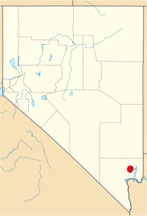
Lee
and Karen Duquette,
The Two RV Gypsies
at Valley of Fire State Park
in Nevada
September 11, 2012 and October 1, 2022
(this is page 1 of 5)
|
Lee
and Karen Duquette, |
|
|
The road to Valley of Fire was full of the dips and curves that the two RV Gypsies are becoming accustomed to seeing and driving on. The mountains were mostly rocky with scattered patches of greenery. |
|
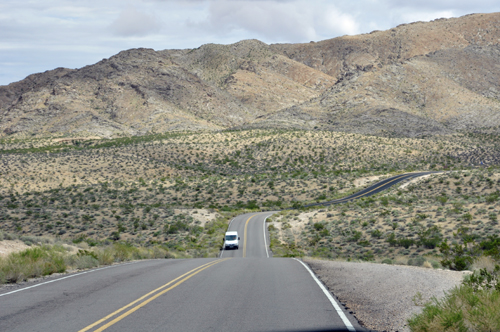 |
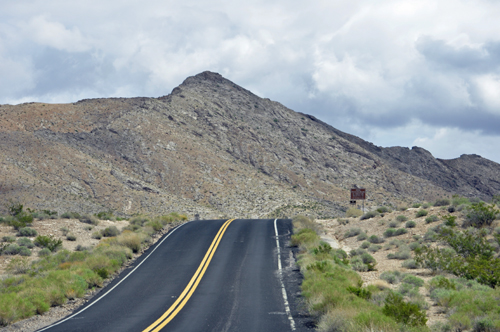 |
Below: 2022 photos in about the same area as the above 2012 photos. |
|
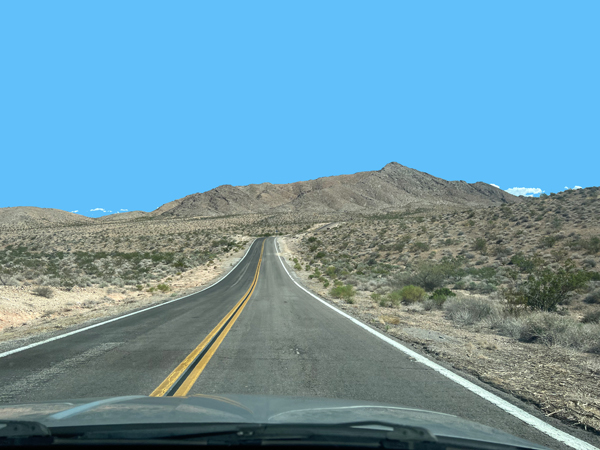 |
 |
Then the mountains changed and were very black in color and razor sharp in shape. Amazing. These are named The Muddy Mountains. They will also be seen in the background of photos further down the page. |
|
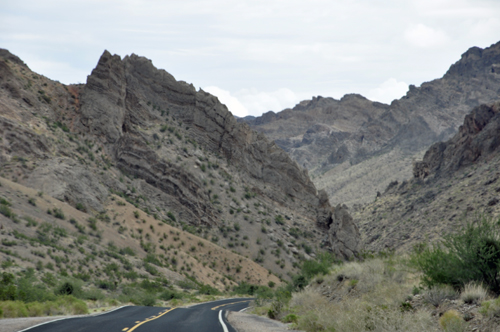 |
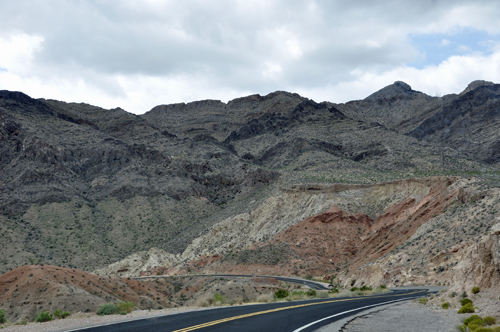 |
Below: 2022 photos in about the same area as the above 2012 photos. |
|
 |
 |
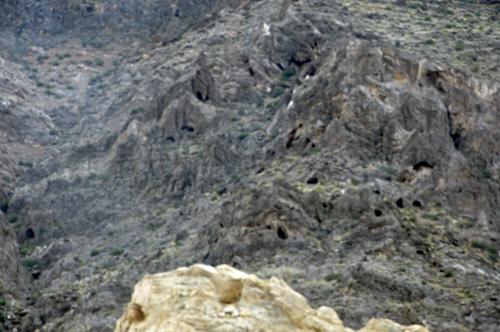 |
|
The mountains changed yet again, and the two RV Gypsies noticed that the mountains were full of big holes. |
|
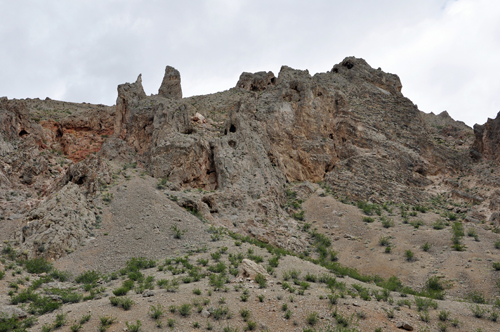 |
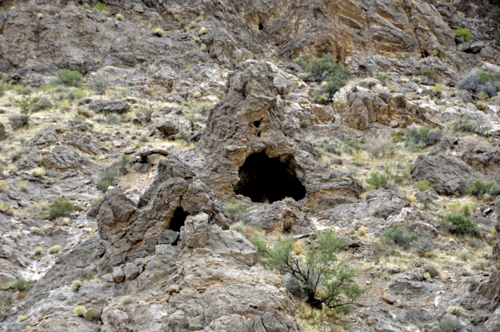 |
Valley of Fire is one of the Nevada's oldest state parks, with 3,000-year-old petroglyphs carved in sandstone and breathtaking views of maroon-colored rock formations.It covers an area of almost 42,000 acres and was dedicated in 1935. It derives its name from red sandstone formations, formed from great shifting sand dunes during the age of dinosaurs. These features, which are the centerpiece of the park's attractions, often appear to be on fire when reflecting the sun's rays.Valley of Fire is located 50 miles northeast of Las Vegas, at an elevation between 2,000 - 6,000 feet. It abuts the Lake Mead National Recreation Area at the Virgin River confluence. It lies in a 4 by 6 mile basin. |
|
 |
|
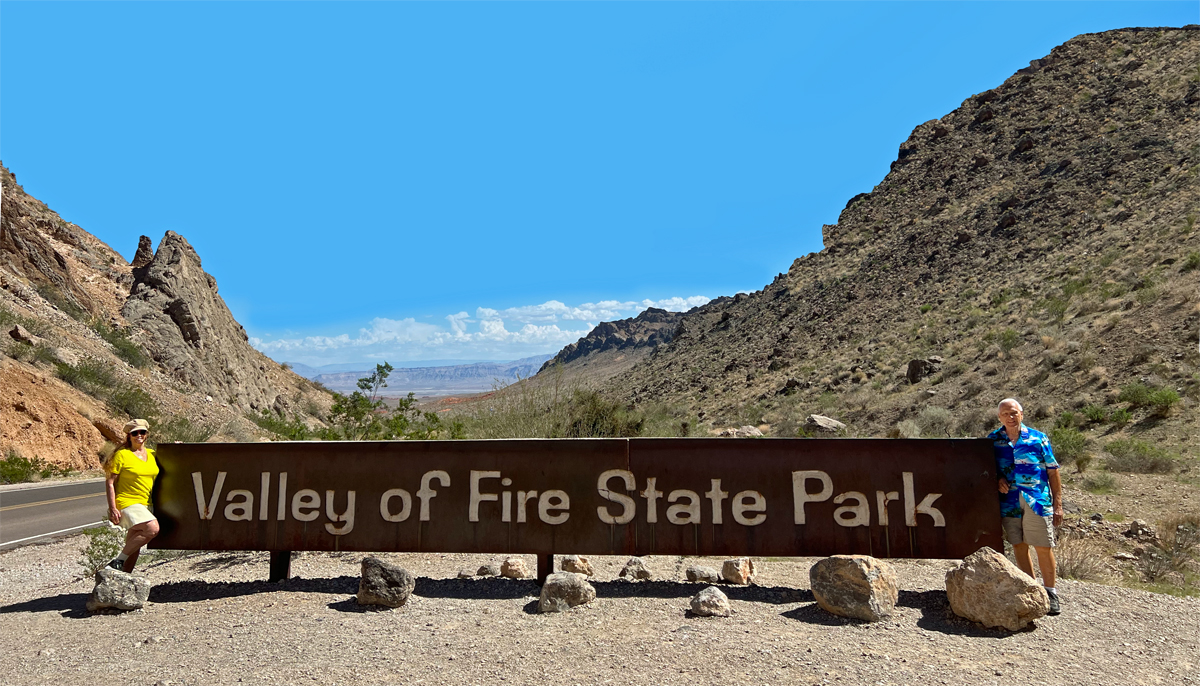 |
|
 |
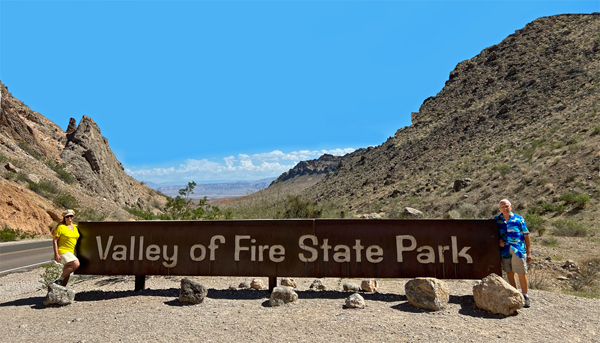 |
The Valley of Fire State Park is open from sunrise to sunset. It is a one- hour drive north of Las Vegas. The entrance fee on this date was $10 per car per day. If you are planning on camping then it was $20, which includes the $10 entrance fee and the spot on the campground. If you have a National Park Pass, it does NOT apply to any state parks. (Prices are always subject to change, and the two RV Gypsies have NO control over prices or hours, or closings mentioned anyplace on this very large website.) |
|
 |
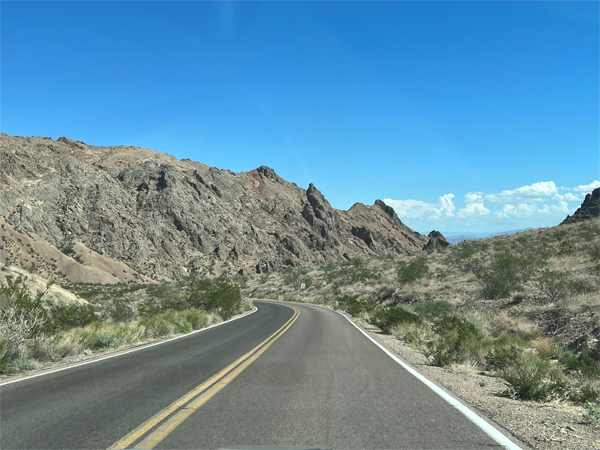 |
Below: The two RV Gypsies' favorite section in The Valley of Fire - THE BEEHIVES |
|
Beehives: The beehives were the
first thing the two RV Gypsies saw after entering the West Entrance
Gate. The huge orange rocks are an unusual sandstone formation that
look like giant beehives! There are plenty of parking spots.
|
|
 |
|
Karen Duquette wore green in 2012 (as shown above), and bright yellow in 2022 (as shown below) |
|
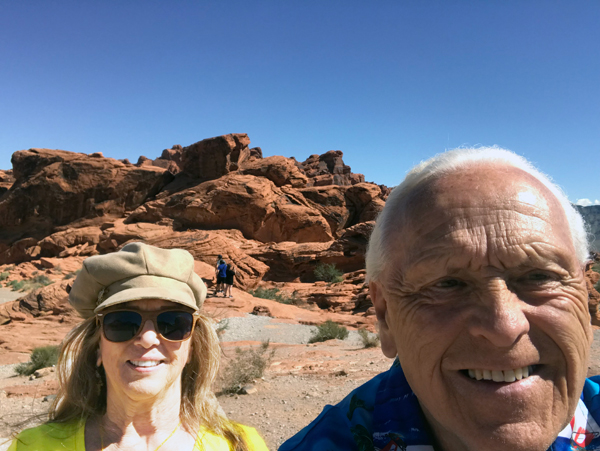 |
|
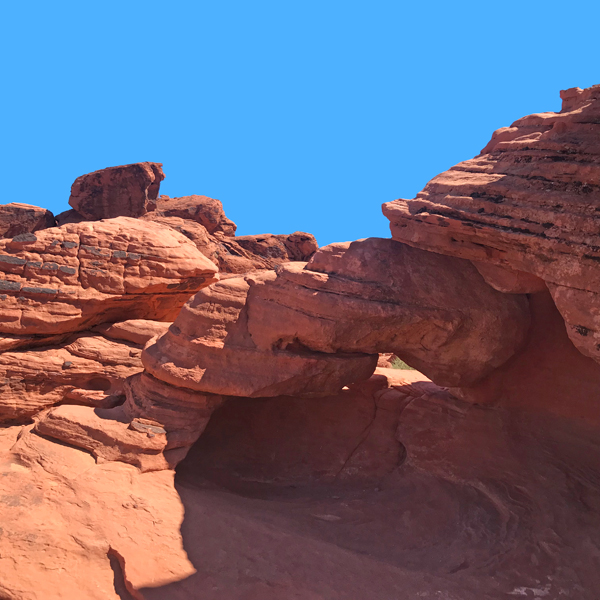 |
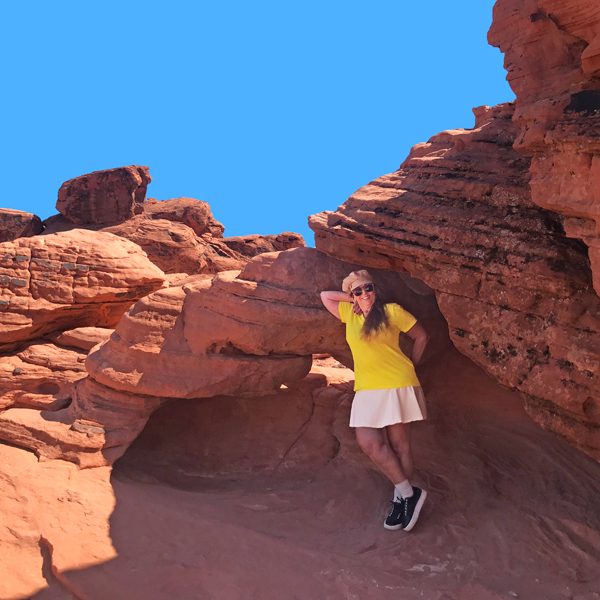 |
 |
|
 |
|
Below is the two RV Gypsies' favorite part of this park. |
|
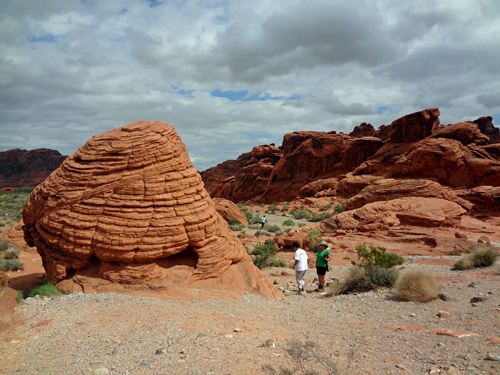 |
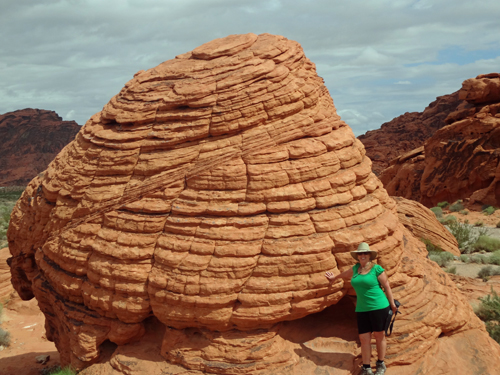 |
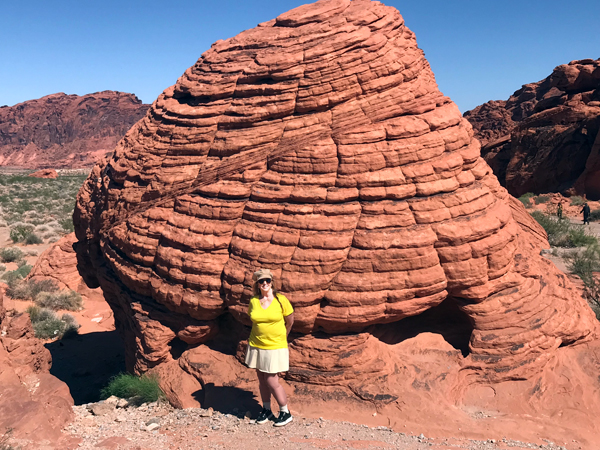 |
|
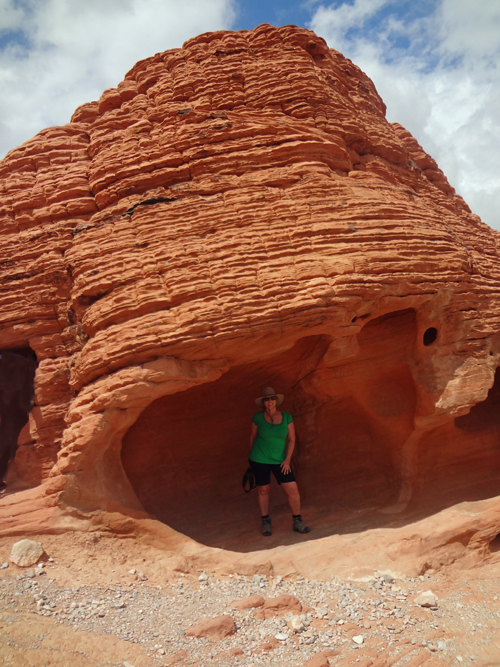 |
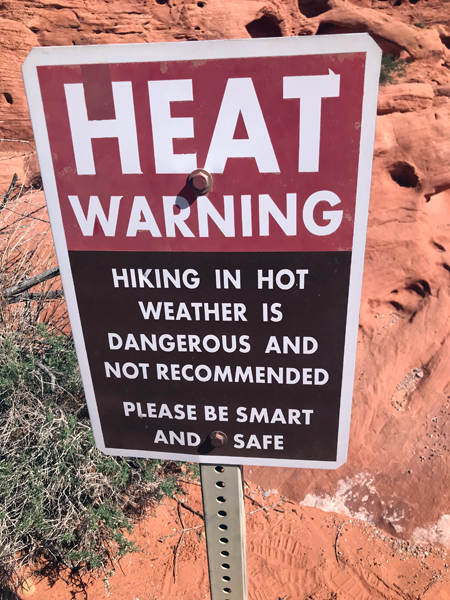 |
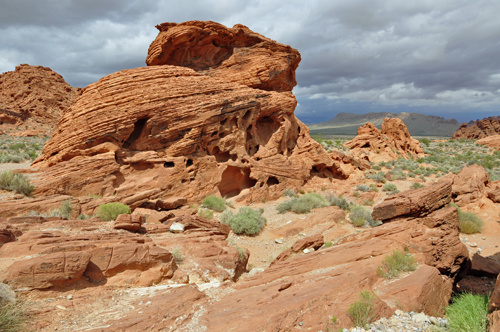 |
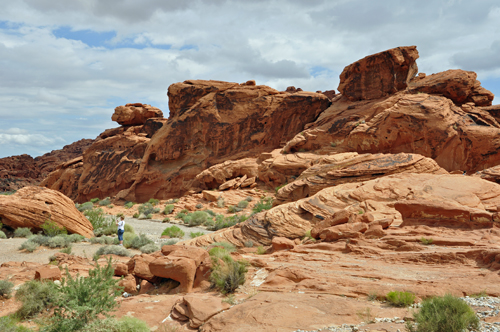 |
 |
 |
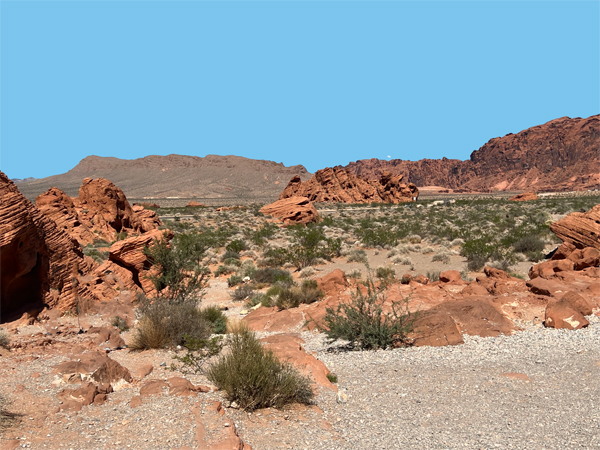 |
 |
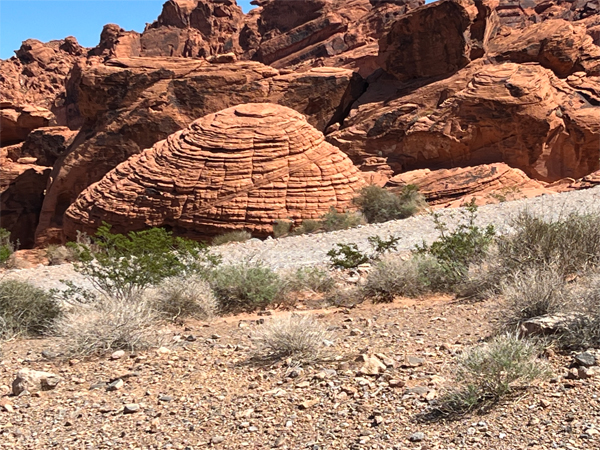 |
 |
 |
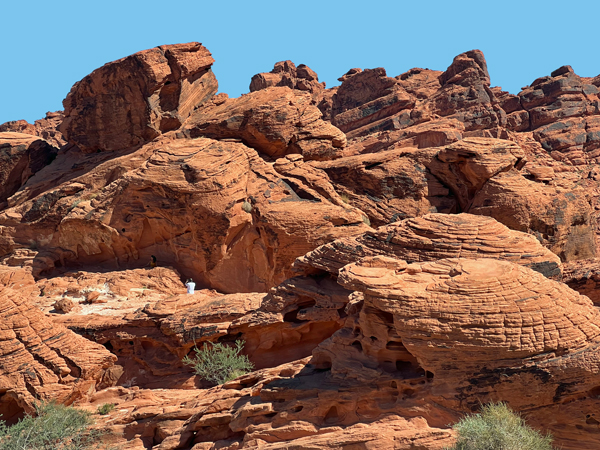 |
 |
|
Lee Duquette tried to hide in a beehive at Valley of Fire State Park in Nevada, but eagle-eyed Karen saw him before he could completely disappear into the rock formation. |
|
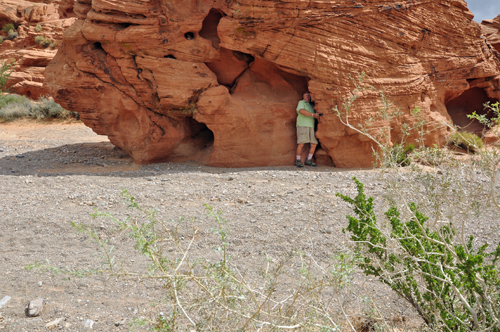 |
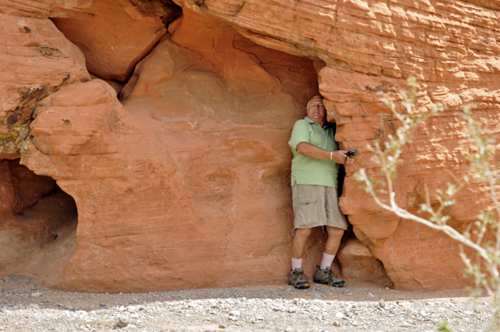 |
 |
|
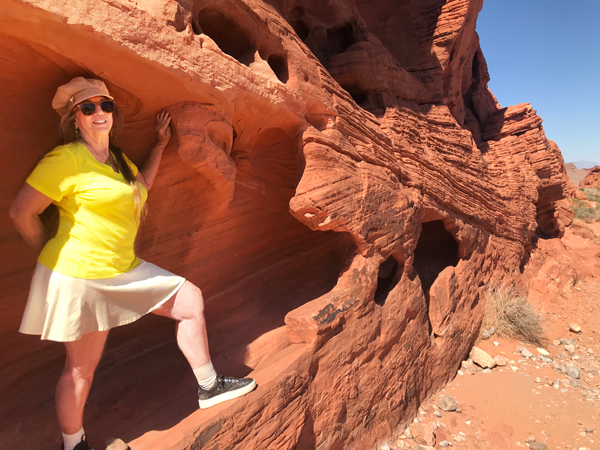 |
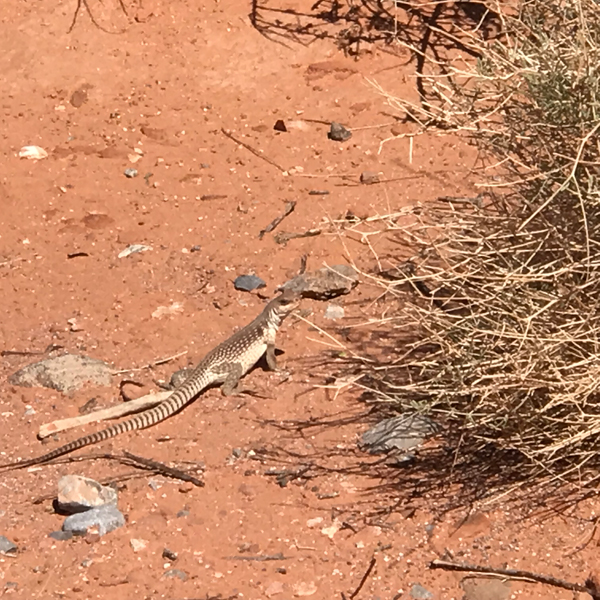 |
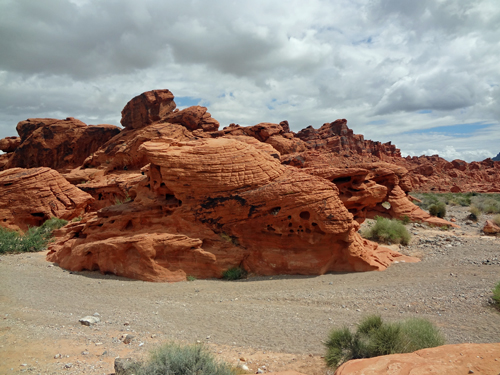 |
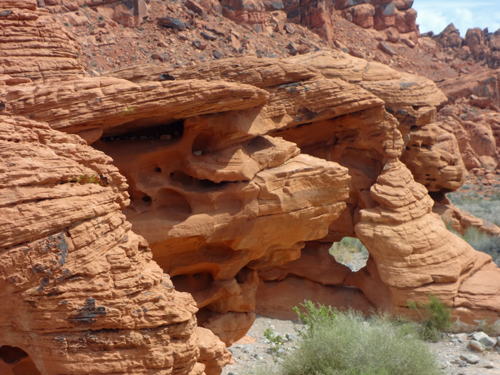 |
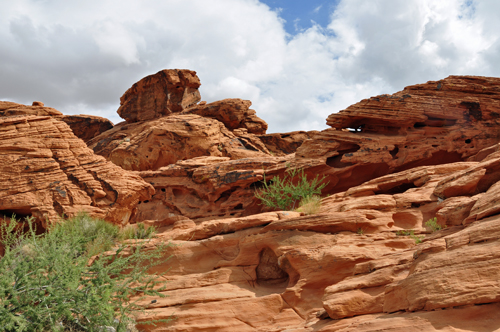 |
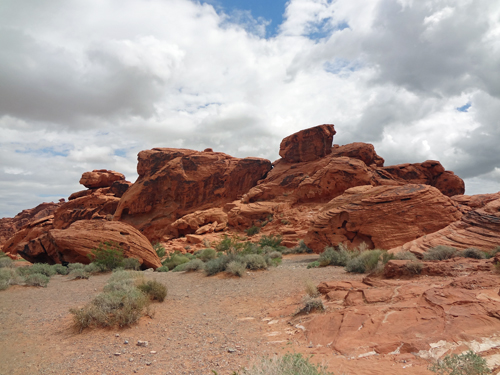 |
Notice the mountain range called The Muddy Mountains in the background of this panorama and in the photo below it. |
|
 |
|
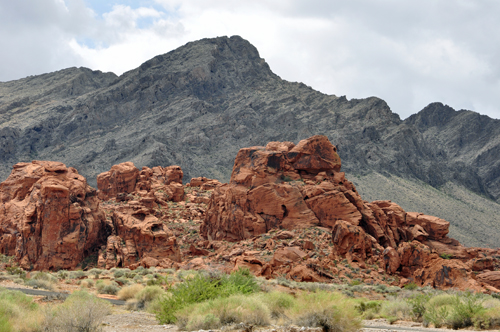 |
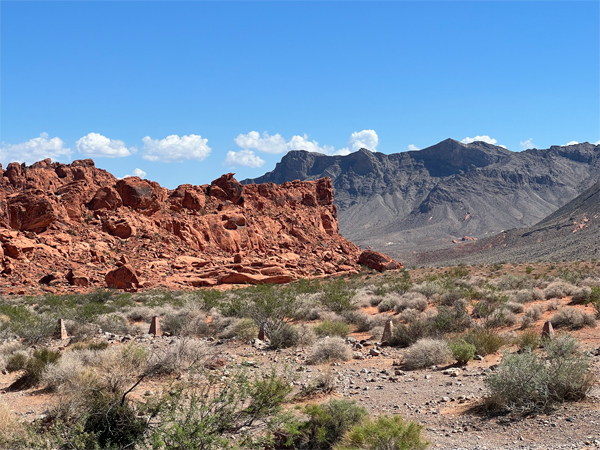 |
 |
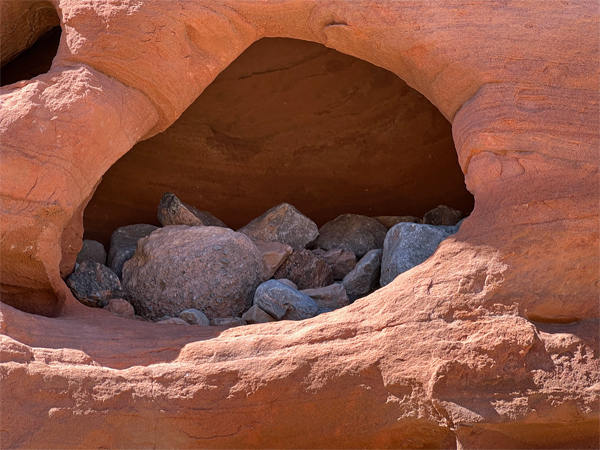 |
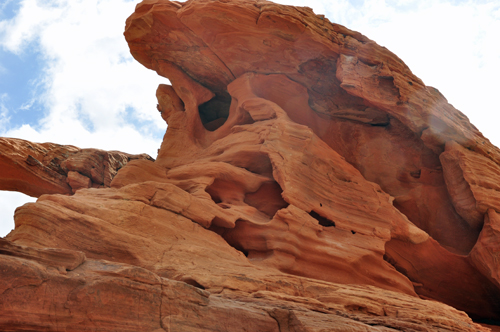 |
|
Karen Duquette went into a Beehive and found a window to look out of. Lee Duquette put the camera on self-timer and tried to join Karen but could not get there in time. |
|
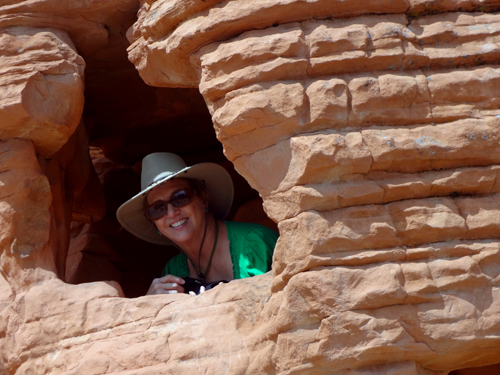 |
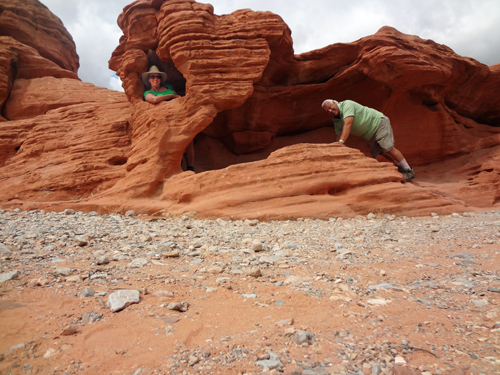 |
Below: Approaching atlatl rock in 2022 (see the staircase in the far right-hand corner of the photo. |
|
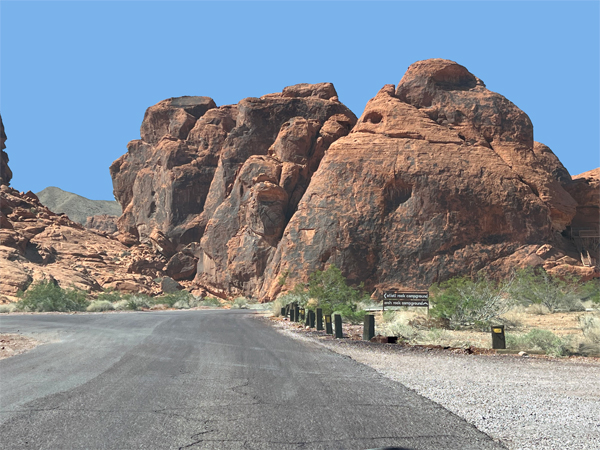 |
|
Below: atlatl rock sign and the staircase up for a better view (2012 photos). |
|
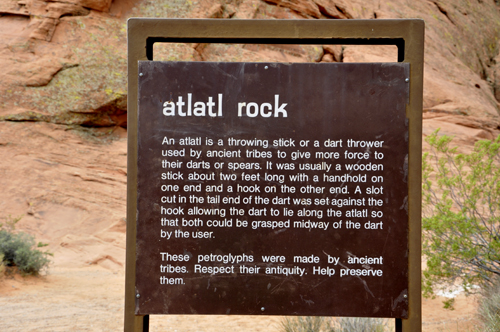 |
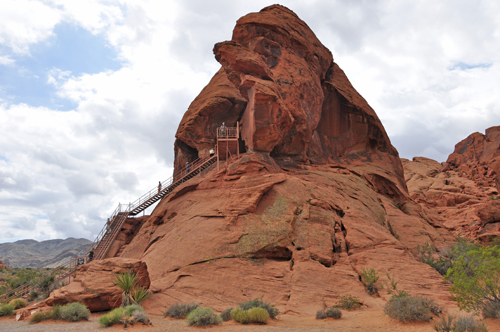 |
Below: atlatl rock (2022 photos) |
|
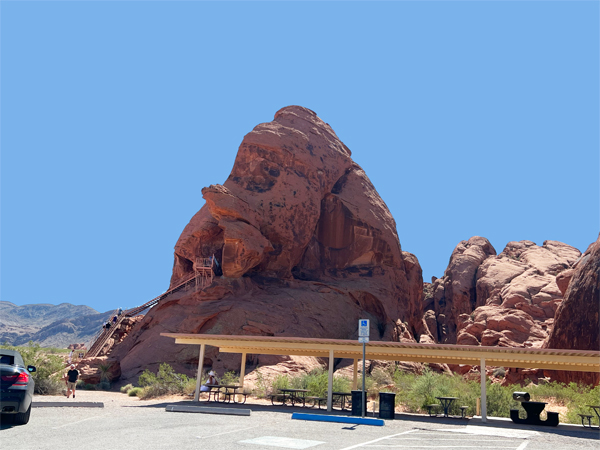 |
 |
The roads in the Valley of Fire were full of dips, same as the regular roads |
|
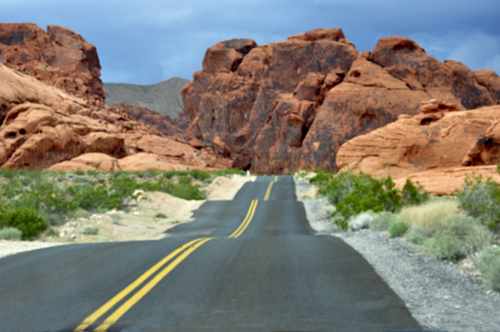 |
|
NATURAL ARCH: Located not too far from atlatl rock, the two RV Gypsies came to the area known as The Natural Arch. The Arches form when hollows inside the rock are exposed by erosion -- both wind and water. Sandstone is a soft rock that cracks easily, and its weak points often fill with rainwater, which causes it to soften even more. Unable to withstand the blasting of strong winds and the slow dissolving away by rains of the cementing materials holding its sand grains together, the rock weakens allowing an arch to form. Eventually, it will grow too large for its support and nature's forces will complete their work of destruction. |
|
 |
|
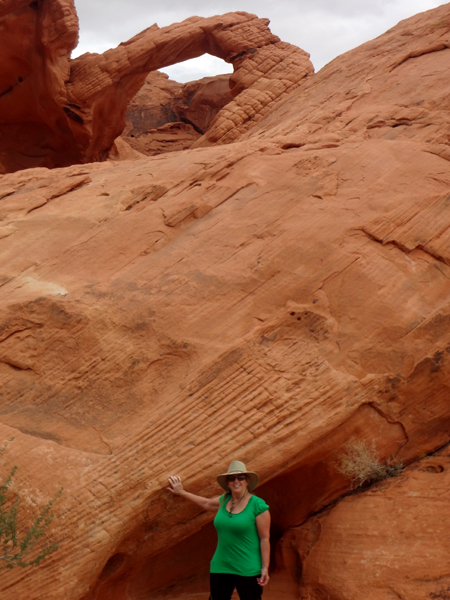 |
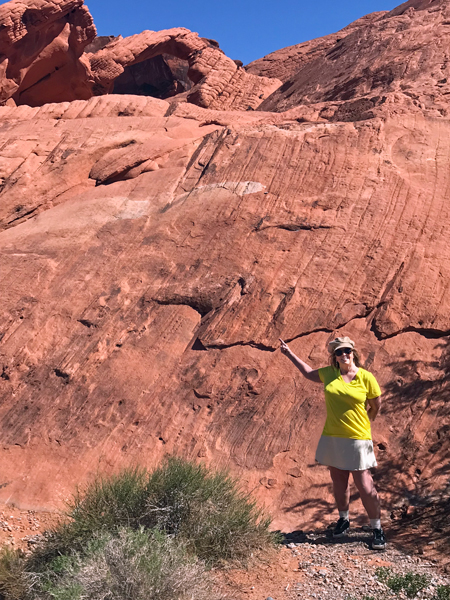 |
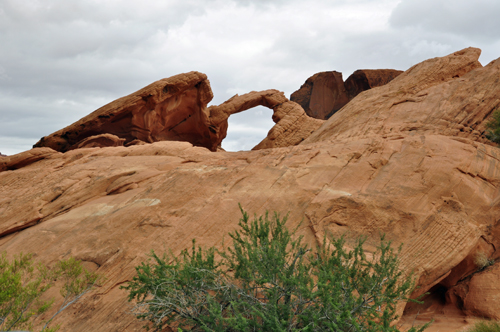 |
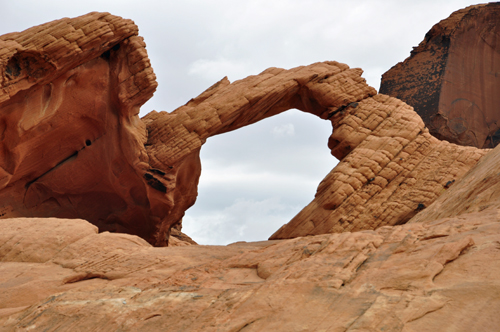 |
Below: 2022 photos of the Natural Arch. NOTE: Karen Duquette later read that it has been reported on internet sites that this arch collapsed on May 30, 2010, but the the RV Gypsies took the above photos on September 11, 2012, and again in 2022 so that just is not true. |
|
 |
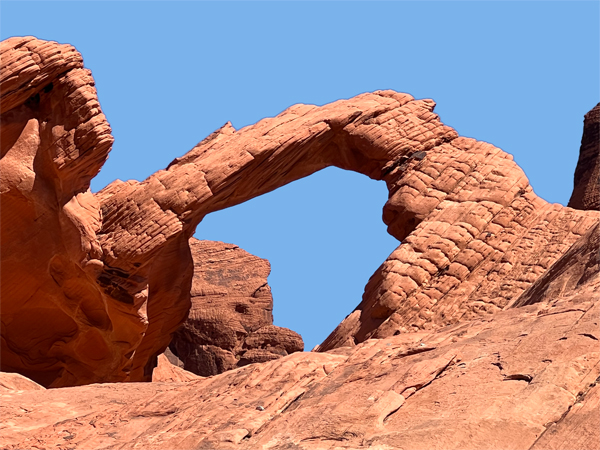 |
The two RV Gypsies walked around to the back of the Natural Arch for another viewpoint. (2012) |
|
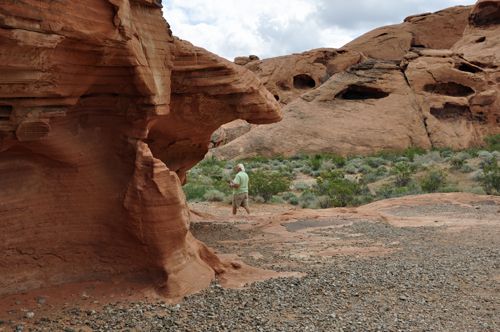 |
|
 |
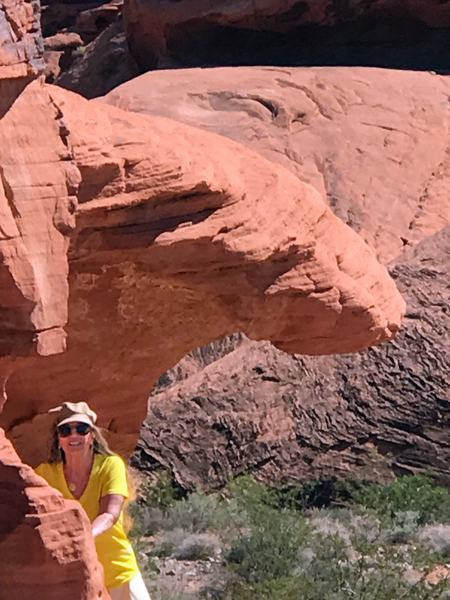 |
Below: View from the back side of the arch (2022 photo) From this viewpoint, the arch itself can not be seen. |
|
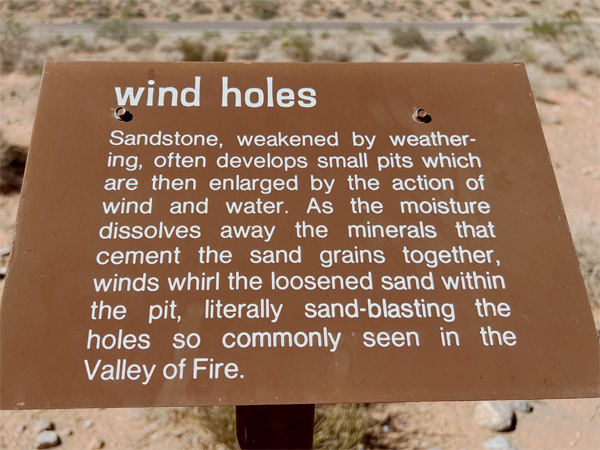 |
 |
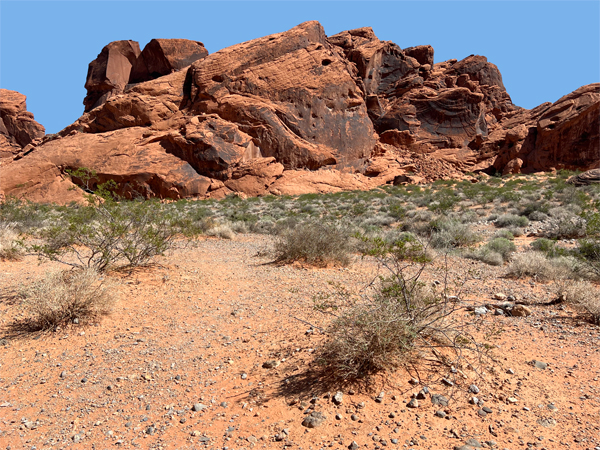 |
 |
 |
Valley of Fire State Park was so amazing, and each area is unique.
In order to help the photos load faster, the photos have been placed
on three different pages. |